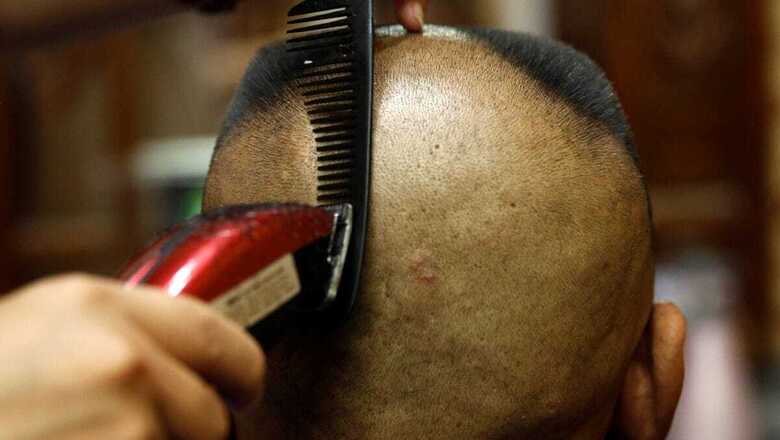
views
A study published by researcher Wenyi Zhang in 2020 on hair loss and how it affects Chinese youth showed that hair loss had become one of the ten most prevalent health problems in the country. Zhang, a researcher at the School of African and Oriental Studies in London, UK, found that three in ten female respondents were reporting losses of hair and one in every five male respondents reported hair loss.
A survey conducted by the China Association of Health Promotion and Education in 2019 found that a staggering 250 million people in China are experiencing hair loss. Surprisingly, most of them are between the ages of 20 and 40.
Out of this large number, men make up 160 million, which is approximately 23 percent of all Chinese men. What’s concerning is that many of them are noticing hair loss as early as age 30, which is twenty years earlier than the generation before them.
Following the pandemic, the number of people in China suffering from hair loss has only grown.
A report by consulting firm Daxue also said that the most adversely impacted age group is people under 30 and those aged between 31- and 40-years old account for 69.8% and 25.4%, respectively, of the population who are going bald.
Why Are Young Chinese Suffering From Hair Loss
Hair loss can happen due to several reasons which could also be out of a person’s control, like environmental or genetic factors. However, young Chinese are witnessing rapid hair loss because of lack of sleep, anxiety over rising costs, pressure to earn more and unhealthy eating and sleeping habits which build up due to the nation’s work culture.
The Chinese state-run broadcaster CGTN in a report published in 2019 said that the youth are aware regarding what causes rapid and early hair fall.
They attributed it to disrupted daily schedules, late nights, and stress from busy work and high living expenses in a bustling city.
A Growing Market
Data from China’s health authorities dating back to 2019 indicates that urban Chinese residents are spending more on hair care each year, with a rapid growth rate of 30%.
Over the next decade, the hair nutrition, restoration and transplantation industry is expected to grow by a whopping 260%.
On JD.com, sales of hair-growing shampoos rose by 136% in 2018 compared to 2017.
Taobao, another major e-commerce platform, revealed that in 2017, hair products like vibrating hair brushes, herbal remedies, Minoxidil and adhesive hair pieces ranked among its top 40 bestsellers.
Over 40% of these sales were made by consumers under 30 years old.
During 618 shopping festival in 2022, also known as June 18 Shopping Festival, is one of China’s major annual online shopping events, originally created by e-commerce giant JD.com to commemorate its founding anniversary on June 18, demand for hair care products increased by 33.1%.
The Daxue report said that youth suffering from hair loss often opt for shampoos for thinning hair. The sales of shampoos for thinning hair in China reached around 1.54 billion yuan. A survey by Ipsos revealed that in 2022, 69% of 3,000 Chinese participants bought anti-hair loss shampoo.
Among hair loss treatments, finasteride, spironolactone, and minoxidil are widely used. Chinese brands like Mandi and Dafeixin, who sell these hair loss treatments, have seen significant sales growth.
Mandi’s Minoxidil spray sales on Taobao and Tmall hit nearly 60 million yuan in the first quarter of 2021.
Meanwhile, Dafeixin’s annual sales surged from 11 million yuan in 2018 to 116 million yuan in 2021, as per Zhendong Pharmaceutical’s data.
Since 2016, China’s hair transplant industry has grown steadily, reaching 13.4 billion yuan in 2020. However, only 516,000 surgeries were done that year, with a low penetration rate of 0.2%, though the lower rates could be attributed to the Covid-19 pandemic and the Covid Zero policy which barred people from getting out of their homes.
The Enforcement Directorate in India also unearthed an ₹11,793-crore human hair smuggling network in Hyderabad, Telangana which smuggled hair into China using a “three-point corridor” spanning Hyderabad, Mizoram and Myanmar.
The smuggled hair from Hyderabad was routed to China, Myanmar, Bangladesh and Vietnam and funds from traders in Myanmar were reportedly funnelled back to Hyderabad.




















Comments
0 comment